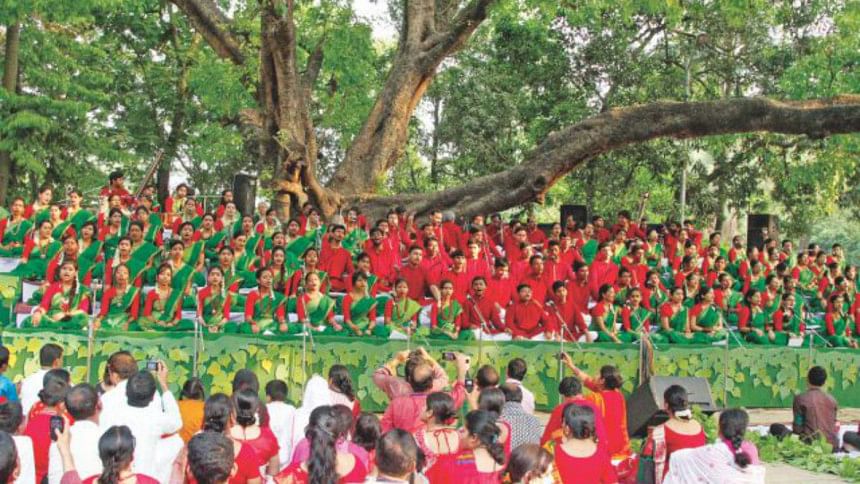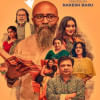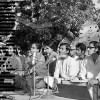Melay Jairey and Baishakhi thoughts

Every Bangla Naboborsho or Bangali New Year, I am deluged with requests for interviews by newspapers, periodicals and television channels to discuss the background and thought process that went into creation of my song Melay Jairey ("Let's go to the fair"). This is a song that I wrote, composed and sang in 1988, which was published in the 1990 album Mela by my erstwhile band, Feedback. The song in its original form survives in the public domain, even after 26 staggering years, placing it in the category of a classic.
As a child in the late 60s, I would accompany my parents on many Baishakh celebrations. Those were the times when we were East Pakistan, and the Bangla language, with its rich cultural heritage, was being savaged by the powers that be as 'un-Islamic'. The Ramna Park, where the earliest celebrations were arranged by Chhayanaut, was the first citadel of cultural resistance against Pakistan, the first attempts at showcasing our rich, ancient, secular culture whose roots were in the boondocks of rural Bengal. About a thousand to fifteen hundred like-minded and conscious individuals would get together with their families and friends, a mutual admiration society of sorts, because the faces – starting from organisrs to artists to musicians to the audience – were those that we were all familiar and comfortable with.
The Ramna Park took on the aura of a picnic venue, and we children were more interested in playing games in the vast open spaces while our parents took on the rigours of songs by Tagore (which in itself was 'subversive' as Pakistan had banned his work), Nazrul and other cultural luminaries, folk musicians, dances and poetry recitals, little of which we understood. However, the tokenistic air of freedom in the park from the clutches of oppression, the freedom to be who we were, if only for a day, took on different emotional dimensions. As children, we could hardly relate to these, but the fond memories left strong and undeniable imprints on our impressionable minds.
Not unsurprisingly, the yearly event at Ramna, post the independence of Bangladesh in 1971, Pahela Baishakh turned into a mass celebration with Chhayanaut, taking centre stage in playing a pivotal cultural role in our nation's struggle for emancipation. Yet, Bangla New Year celebrations in the years following lacked joie de vivre and turned out to be very serious, unemotional and boring affairs with Tagore sung unemotionally, eyes closed, nose flared and no smiles or merriment visible in the vicinity. More importantly, no one was allowed to even clap, as it was considered a taboo unofficially!
However, by the mid-seventies, the Baishakh celebrations at Ramna no longer resembled a cultural event, it took on the aura of a carnival – with hundreds upon thousands of people from all sections of society joining in. Come the 90s, and the boisterous Mongol Shobhajatra by the students of the Institute of Fine Arts heralded the beginning of the Bangladeshi version of Mardi Gras.
Meanwhile, from a child I matured to a gangly teenager, much to the shock of my parents and Chhayanaut elders, with exposure to a rich dosage of American and European music or "western culture". Long hair, t-shirts, torn and dirty Levis or Wrangler jeans, arrogance in attitude bordering on irreverence to authority and 'control' - the global symbols of the post-Woodstock generation would creep into my persona as much as the rest of my generation. Through its own strength, Bangla rock music had found its rightful place in Bangla culture by mid-70s. Independence from Pakistan in 1971 meant that we had moved away from being a 'resistance culture' to one of liberation that resonated with what it meant to be 'global'. Our 'seniors' were not amused!
Melay Jairey was just a few years in the making – and was in fact born as a revolt against the narrow tunnel vision of 'Bangali culture'. The song was a challenge to authority; In attitude and merriment, celebrating the Bangla New Year, I felt, did not have to be any different from the Gregorian New Year's Eve. Fun and frolic is not alien to the Bangali psyche, not at least in rural Bangladesh where the majority of our population lives, was my justification. The rest is history.
On technical aspects, the song carved the Baishakhi soundscape and demonstrated monumental advancement in Bangladeshi music. All four senses are activated i.e. hearing - with the intro music of dhak, dhol, ektara, mandira, dotara, flute, as much as western brass instruments; sight – with lyrics visualising strong colours of Baishakh flora and fauna – polash, shimul, bashonti sarees, khopa (hair bun) and the strong sun as the Mangal Shobhajatra ensues; smell - with urban women's choice of 'foreign perfumes' over jasmine flowers, while they romanced! The sense of touch comes in the dola or groove that everybody could dance to. The only sense deliberately not represented in the song is taste – as the poor in Bangladesh, who are the original stakeholders of the festival, sometimes cannot afford a square meal even on the first day of the year.
And yes, there was a warning about 'bokhate cheley' or abject 'ruffians' who would harass women on Pahela Baishakh. Back in the 90s, this was the first public take by anyone on issues like gender sensitivity, 'eve teasing' or sexual harassment, when the terms were not even in currency. While they may have today become issues of serious concern, ironically in 1993 - three years after the song was released - we read the first report of women being harassed in public during the festival! Percolating further, nothing left me more disturbed, distressed and depressed than the mass harassment of women during Pahela Baishakh celebrations in 2015.
That said – the song Melay Jairey's success, above all, is credited to those that have heard it, those who have loved it and made it a part of our cultural heritage, and especially those who will continue in the belief that this is the time of the year when we wash away all our negativities, all our fears, inhibitions and doubts – and usher in the positives. These are the munificence that makes us Bangalis for all the right reasons, a proud race that places itself among the brightest, most tolerant and intelligent of world's cultures.
The writer is a Dhaka based, jazz-rock fusion musician, poet, writer, Baul researcher and cultural activist.

 For all latest news, follow The Daily Star's Google News channel.
For all latest news, follow The Daily Star's Google News channel. 








Comments